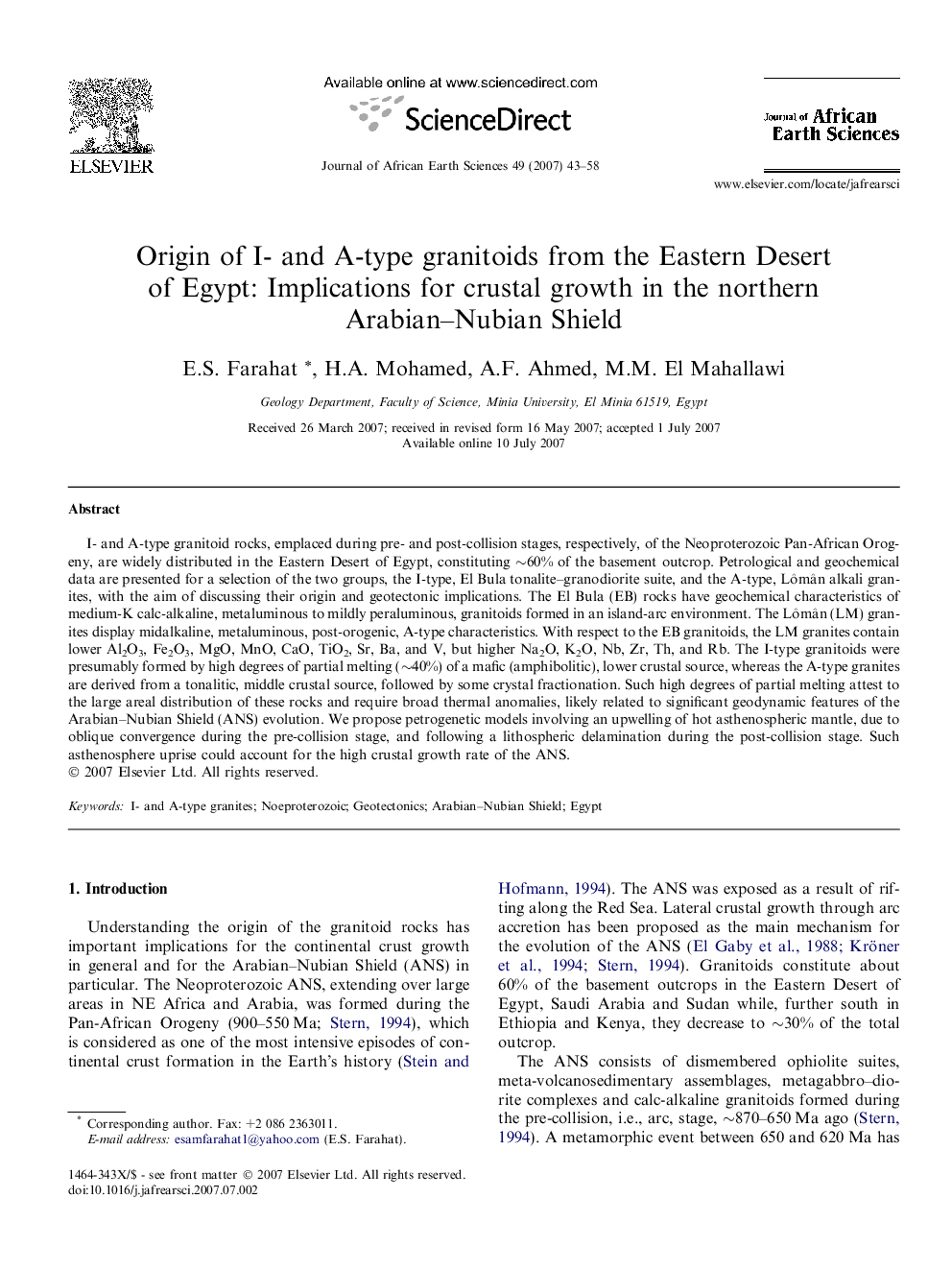| کد مقاله | کد نشریه | سال انتشار | مقاله انگلیسی | نسخه تمام متن |
|---|---|---|---|---|
| 4729688 | 1640259 | 2007 | 16 صفحه PDF | دانلود رایگان |

I- and A-type granitoid rocks, emplaced during pre- and post-collision stages, respectively, of the Neoproterozoic Pan-African Orogeny, are widely distributed in the Eastern Desert of Egypt, constituting ∼60% of the basement outcrop. Petrological and geochemical data are presented for a selection of the two groups, the I-type, El Bula tonalite–granodiorite suite, and the A-type, Lômân alkali granites, with the aim of discussing their origin and geotectonic implications. The El Bula (EB) rocks have geochemical characteristics of medium-K calc-alkaline, metaluminous to mildly peraluminous, granitoids formed in an island-arc environment. The Lômân (LM) granites display midalkaline, metaluminous, post-orogenic, A-type characteristics. With respect to the EB granitoids, the LM granites contain lower Al2O3, Fe2O3, MgO, MnO, CaO, TiO2, Sr, Ba, and V, but higher Na2O, K2O, Nb, Zr, Th, and Rb. The I-type granitoids were presumably formed by high degrees of partial melting (∼40%) of a mafic (amphibolitic), lower crustal source, whereas the A-type granites are derived from a tonalitic, middle crustal source, followed by some crystal fractionation. Such high degrees of partial melting attest to the large areal distribution of these rocks and require broad thermal anomalies, likely related to significant geodynamic features of the Arabian–Nubian Shield (ANS) evolution. We propose petrogenetic models involving an upwelling of hot asthenospheric mantle, due to oblique convergence during the pre-collision stage, and following a lithospheric delamination during the post-collision stage. Such asthenosphere uprise could account for the high crustal growth rate of the ANS.
Journal: Journal of African Earth Sciences - Volume 49, Issues 1–2, September 2007, Pages 43–58